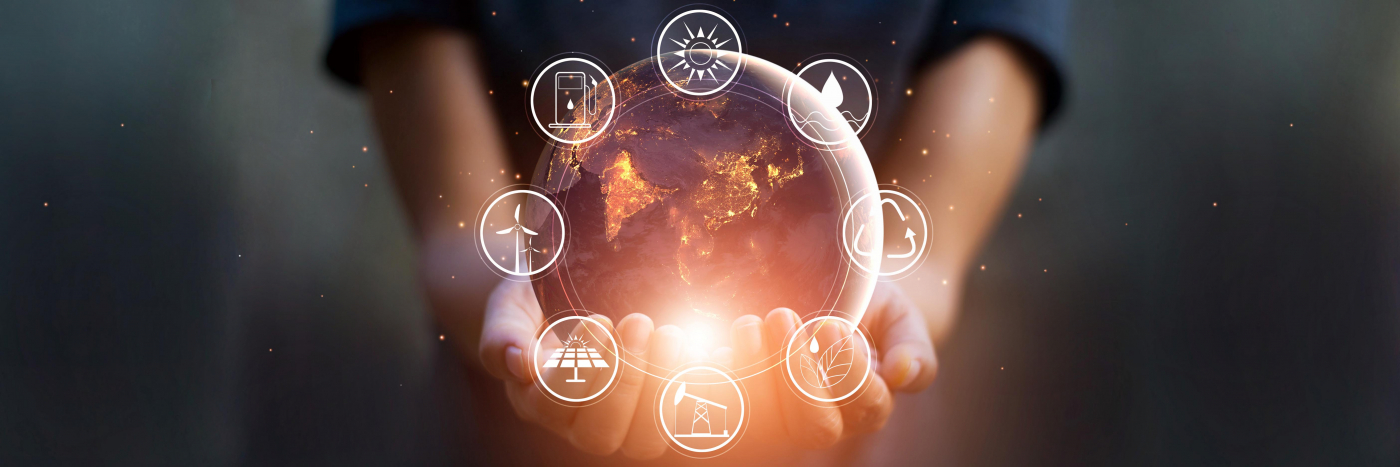For billions of years, nature has formed sophisticated solutions and processes that have sustained life, acting as the primary source of inspiration for humans in creating new technologies.
For example, by studying how pigeons fly, the Wright Brothers were able to build the first aircraft.
Now, world leaders are encouraging more people to search for solutions by consulting nature, which some believe holds the answers to all challenges faced by humans.
The Global Manufacturing and Industrialisation Summit (GMIS), a joint initiative by the United Arab Emirates and the United Nations Industrial Development Organization (UNIDO), held on July 2019 in Russia, shed light on the role of “nature-inspired technologies” as a means of igniting solutions for real-world challenges. Biomimetics or biomimicry is the science of designing and creating new technologies that are inspired by biological solutions at macro and nanoscales. [2]
Biomimicry studies nature and attempts to form processes and systems that sustainably solve human problems through ‘mimicking’ nature. It can be used in a variety of fields and enhanced with artificial intelligence and big data.
The GMIS highlighted a vital topic on how we can avoid environmental damage with nature-inspired technology, which inspired this new global initiative by the Kurchatov Institute, the Skolkovo Foundation, and the Russian Ministry of Industry and Trade. This was established to encourage research papers through an academic network, focusing on biomimicry and sustainable industrial technologies inspired by nature.
Holistic biomimicry is the future
Biomimicry can be applied to various fields across technology, construction, and manufacturing.
The largest shopping mall in Zimbabwe, without AC
Opened in 1996 and possibly the first biomimetic building of its kind to be built up to this level of sophistication, the Harare’s Eastgate Centre is Zimbabwe’s largest shopping complex. Built by architect Mick Pearce, the mounds of Africa’s termites inspired its structure.
Pearce believed that the structure of the termite mound allowed for efficient regulation of temperature. Consequently, the Eastgate Centre uses minimal machinal cooling, thus producing fewer emissions, and is entirely cooled, ventilated, and heated naturally, without any use of conventional air-conditioning or mechanical systems, hence using 90% less energy than a regular building of its same size. [3]
Semi-artificial photosynthesis, changing the game
A recent study by academics at the University of Cambridge successfully enabled complementary panchromatic solar light absorption by splitting water into hydrogen and oxygen, in their quest to make solar power usage more effective. Potentially, this can be the first step to achieving an “unlimited source of renewable energy.” Because natural photosynthesis uses just 1-2% of what it could convert and store, this semi-artificial photosynthesis can be used as an attempt by humankind to create renewable energy. [4]
There are many more examples of biomimicry’s applications around us. Potentially, biomimicry fused with emerging technologies such as artificial intelligence and big data could be the future of manufacturing all-together, as scientists reaffirm that organisms have evolved for 3.8 billion years to become highly efficient systems which can be utilized for more sustainable living.
A holistic approach to biomimicry may substantially transform energy-waste sectors into more eco-friendly and natural systems that produce almost zero fossil fuels. Moreover, some scientists call for a new way of living, wherein conventional systems around us, such as buildings and graffiti, could function in the same way as trees and meadows converting sunlight to efficient means of energy, carbon dioxide to oxygen, and ultimately, eliminating most waste for a sustainable future. [5]
Want to integrate AI into your business? Get in touch https://deployandtest.com/saal/contact/
Sources:
[1] United Nations Environment Programme, 2018, Turning e-waste into gold: the untapped potential of African landfills
[2] Emirates News Agency, 2019, Fast transformation is radically changing appearance of entire industries, Putin tells GMIS
[3] Alexandridis, G. 2016, “Sustainable Product Design Inspired from Nature”
[4] Katarzyna P. Sokol, William E. Robinson, Julien Warnan, Nikolay Kornienko, Marc M. Nowaczyk, Adrian Ruff, Jenny Z. Zhang, Erwin Reisner. Bias-free photoelectrochemical water splitting with photosystem II on a dye-sensitized photoanode wired to hydrogenase. Nature Energy, 2018; DOI: 10.1038/s41560-018-0232-y
[5] Oguntona Olusegun Aanuoluwapoa, Aigbavboa Clinton Ohisb, Biomimetic strategies for climate change mitigation in the built environment, Energy Procedia, 2017; DOI: https://doi.org/10.1016/j.egypro.2017.03.792

